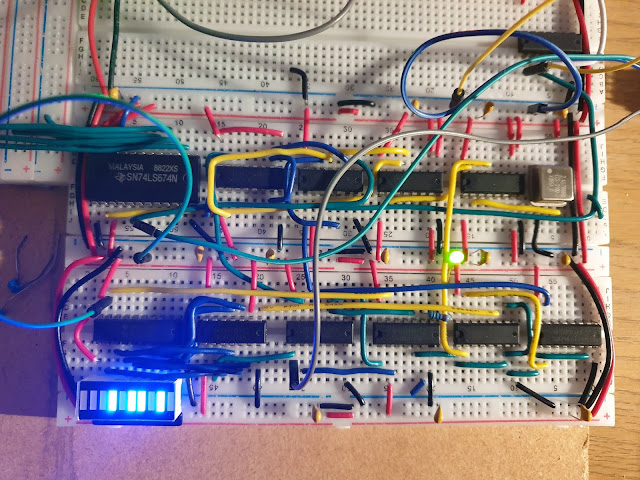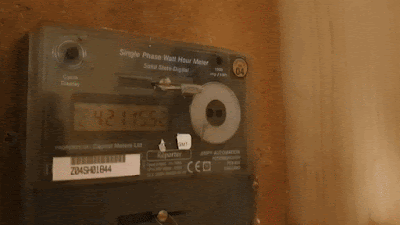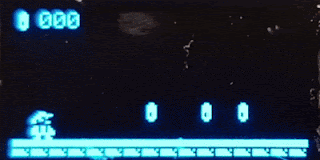8-bit Computer: Adding the UART modules

Until now, my UART transceiver module existed across three breadboards and was not integrated into the 8-bit computer, see previous post . I have now added my UART module to the 8-bit breadboard computer I am building. I have modified the design slightly by adding an 74LS245 so that the received byte can now be put out onto the databus. The blue LED bar below shows the current received byte, and the green LED is lit when Updated schematic The UART TX module remains as previously described, but the finalised UART RX schematic is updated below. Notably a 74LS245 chip can now control the output onto the databus. The RX_READY signal of the UART RX module will feed into the status byte (flag register) of the computer, along with the ALU flags and the SENDING bit of the UART TX module. Chip geography In terms of placement of the chips to make as logical and clean layout as possible, I have used the following layout below. The transceiver...









